Abstract
Communication theories and research data were used to design cross-cultural health education messages. A University of California Los Angeles-Universidad Autonoma in Tijuana, Mexico, research team used the methods of ethnographic and survey research to study behaviors, attitudes, and knowledge concerning prenatal care of a sample of pregnant low-income women living in Tijuana. This audience provided information that served as a framework for a series of messages to increase awareness and change prenatal care behaviors. The message design process was guided by persuasion theories that included Petty and Caccioppo's elaboration likelihood model, McGuire's persuasion matrix, and Bandura's social learning theory. The results from the research showed that poor women in Tijuana tend to delay or not seek prenatal care. They were not aware of symptoms that could warn of pregnancy complications. Their responses also revealed pregnant women's culturally specific beliefs and behaviors regarding pregnancy. After examination of these and other results from the study, prenatal care messages about four topics were identified as the most relevant to communicate to this audience: health services use, the mother's weight gain, nutrition and anemia, and symptoms of high-risk complications during pregnancy. A poster, a calendar, a brochure, and two radio songs were produced and pretested in focus groups with low-income women in Tijuana. Each medium included one or more messages addressing informational, attitudinal, or behavioral needs, or all three, of the target population.
Full text
PDF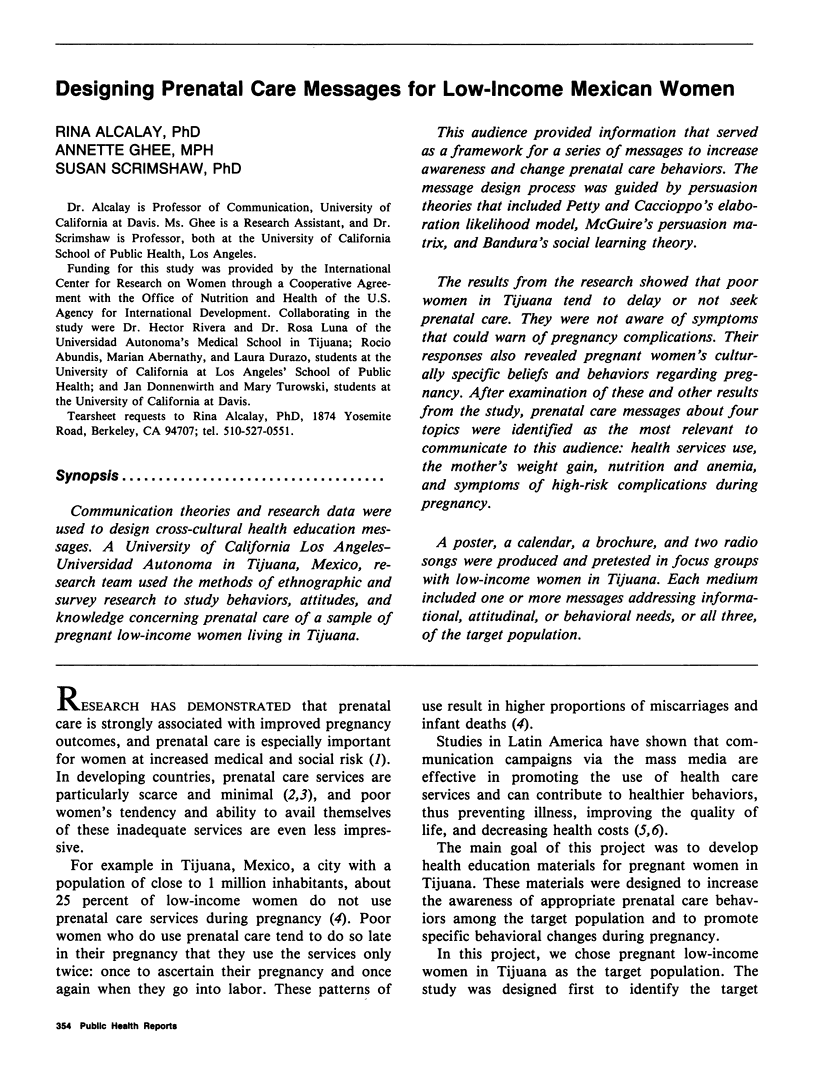
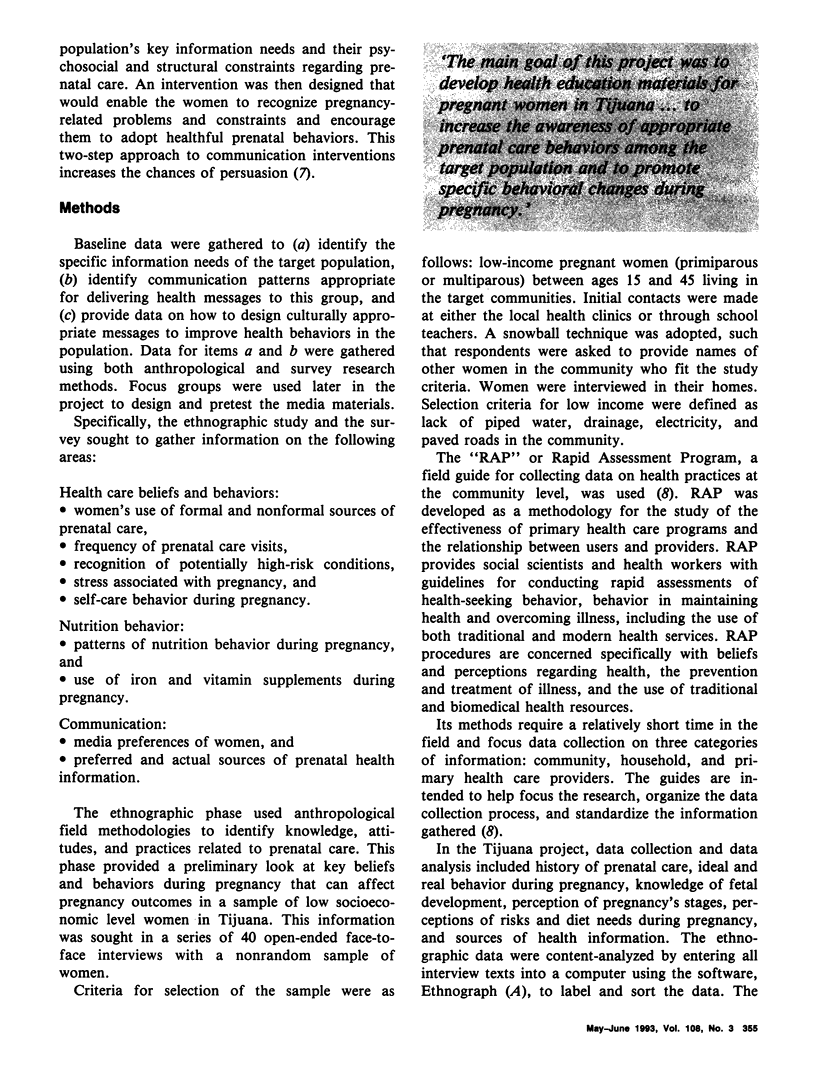
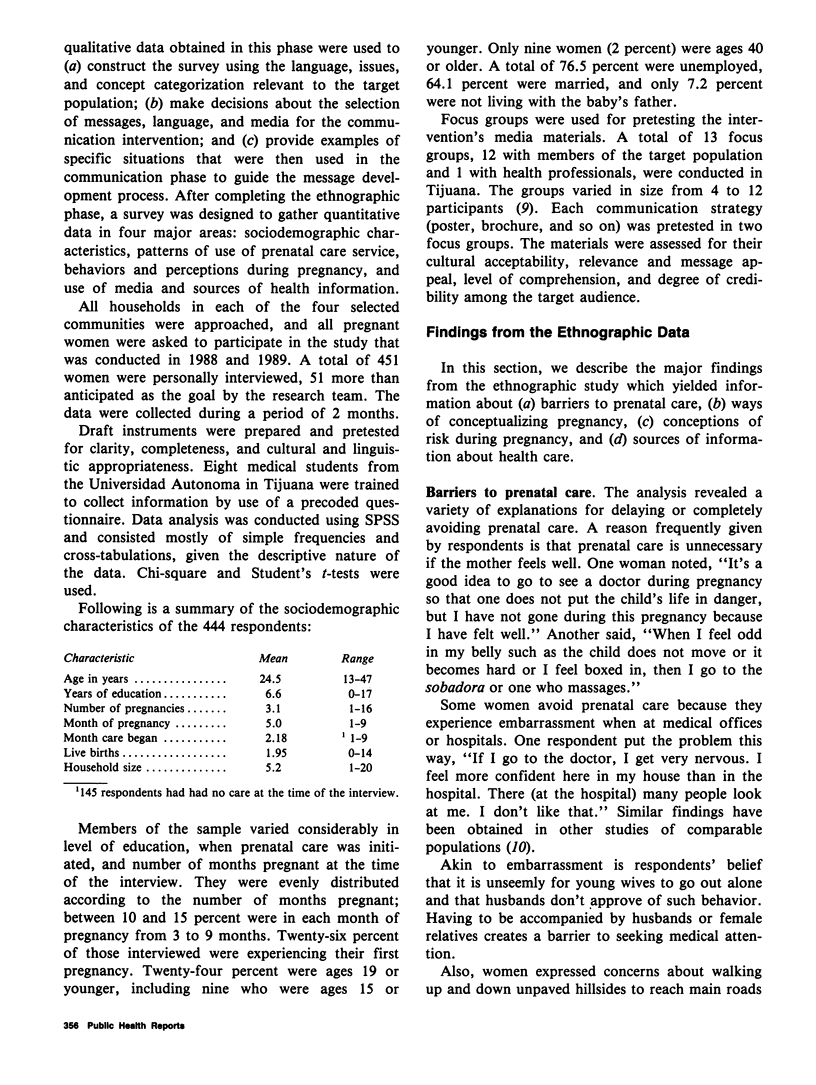
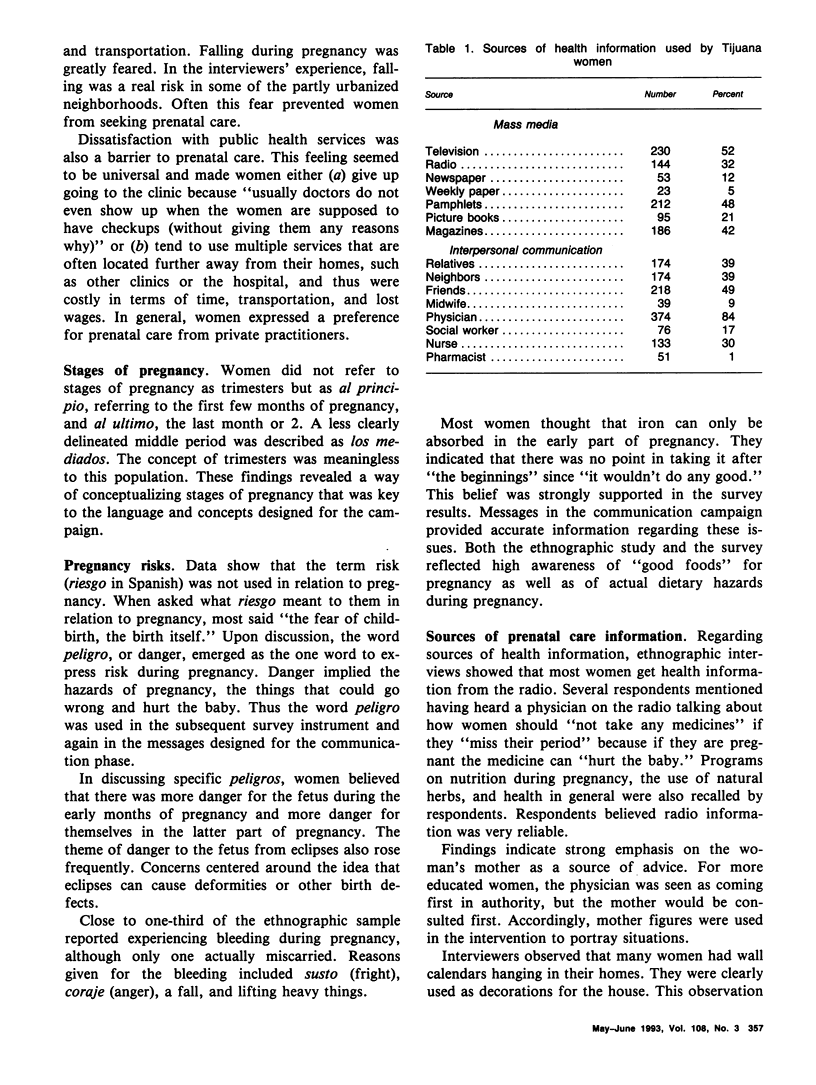

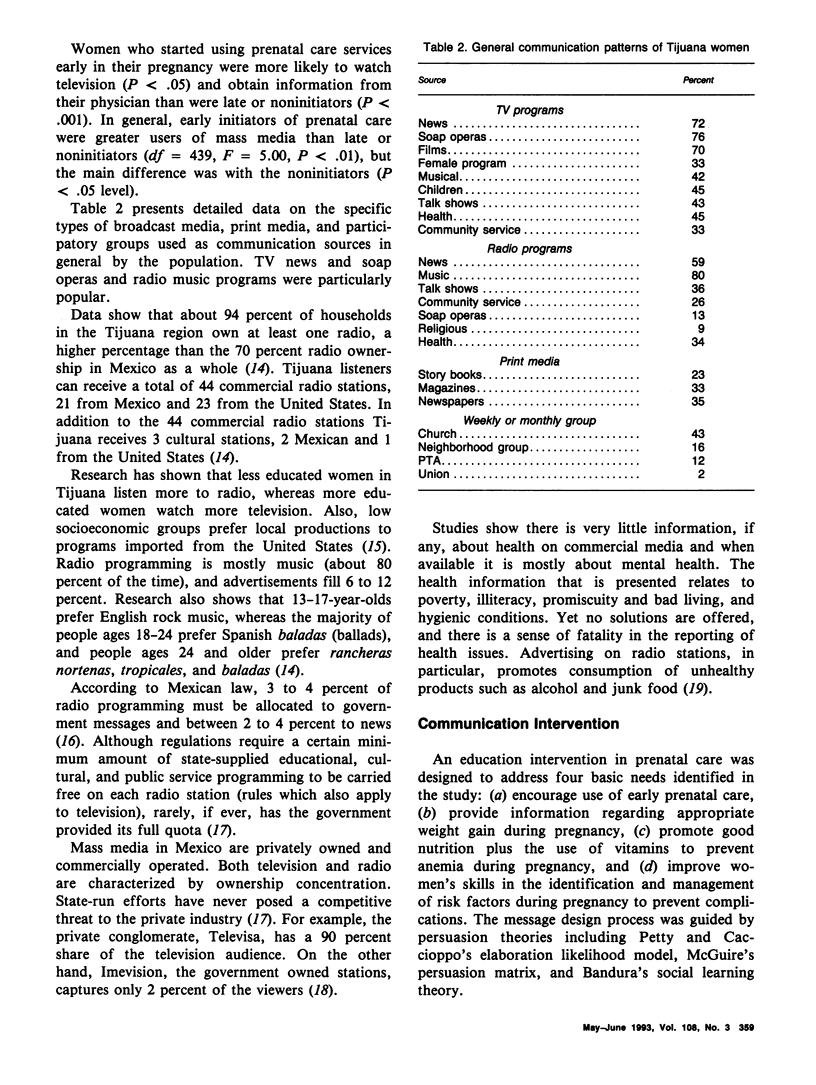
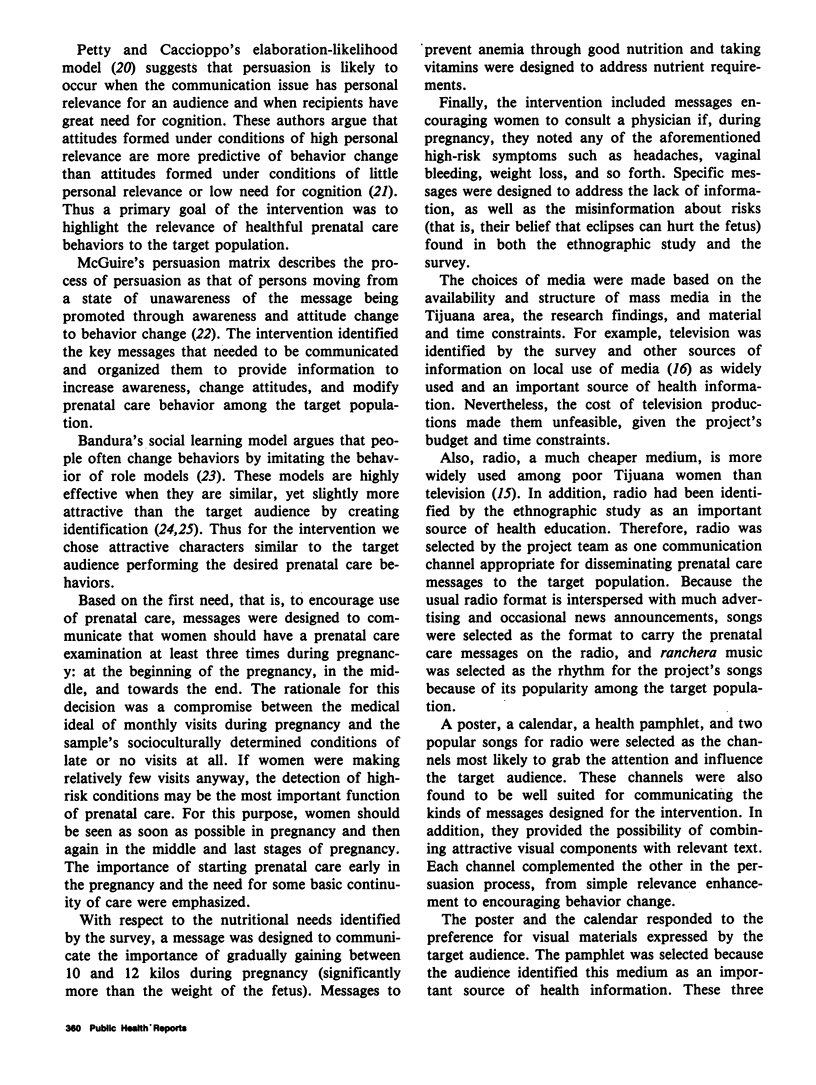
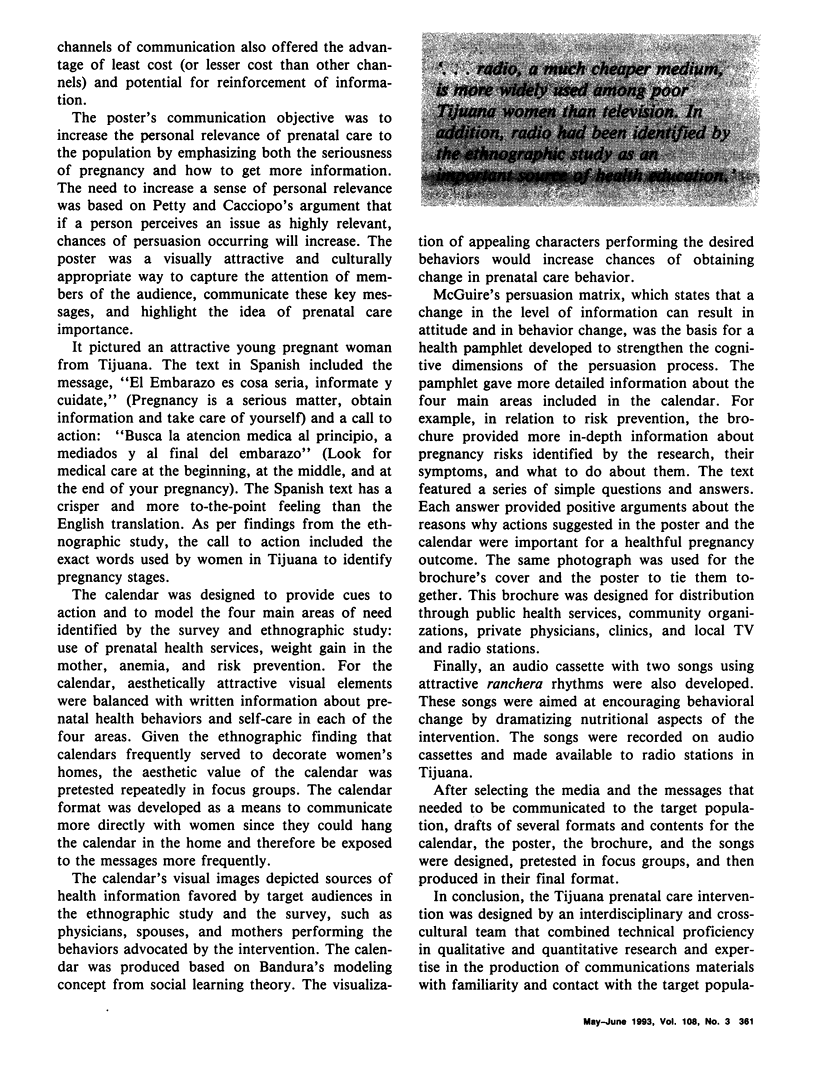
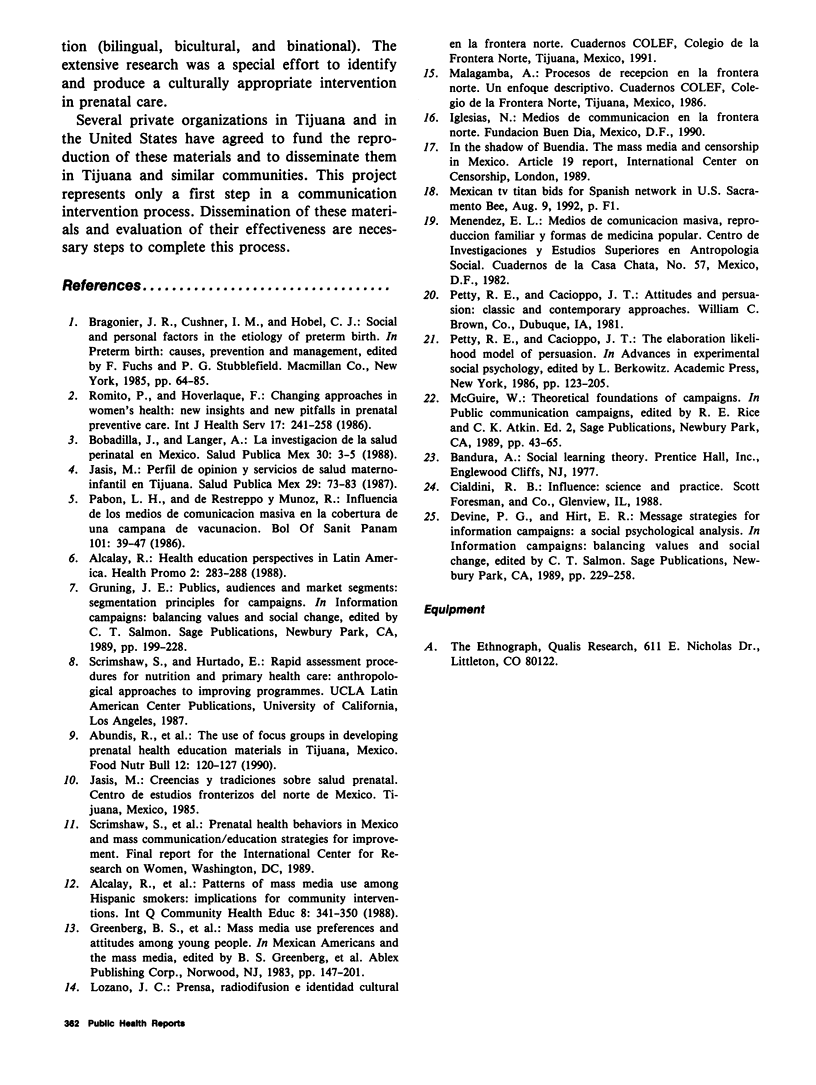
Selected References
These references are in PubMed. This may not be the complete list of references from this article.
- Bobadilla J. L., Langer A. La investigación de la salud perinatal en México. Salud Publica Mex. 1988 Jan-Feb;30(1):3–5. [PubMed] [Google Scholar]
- Jasis M. Perfil de opinión y uso de servicios de salud materno-infantil en Tijuana. Salud Publica Mex. 1987 Jan-Feb;29(1):73–83. [PubMed] [Google Scholar]
- Pabón Lasso H., de Restrepo V., Muñoz R. Influencia de los medios de comunicación masiva en la cobertura de una campaña de vacunación. Bol Oficina Sanit Panam. 1986 Jul;101(1):39–47. [PubMed] [Google Scholar]
- Romito P., Hovelaque F. Changing approaches in women's health: new insights and new pitfalls in prenatal preventive care. Int J Health Serv. 1987;17(2):241–258. doi: 10.2190/LX8E-D4D7-0D3D-2KLP. [DOI] [PubMed] [Google Scholar]


